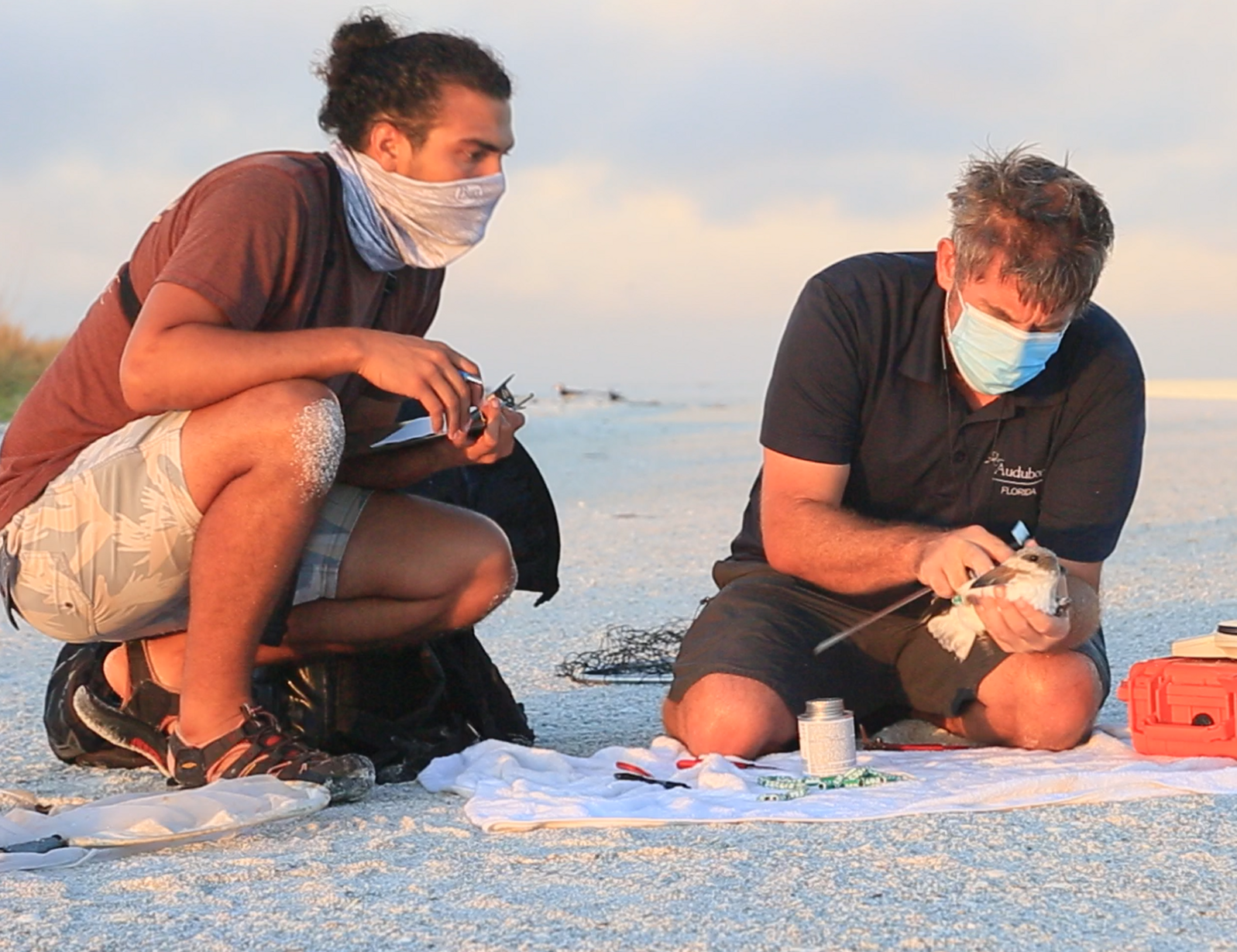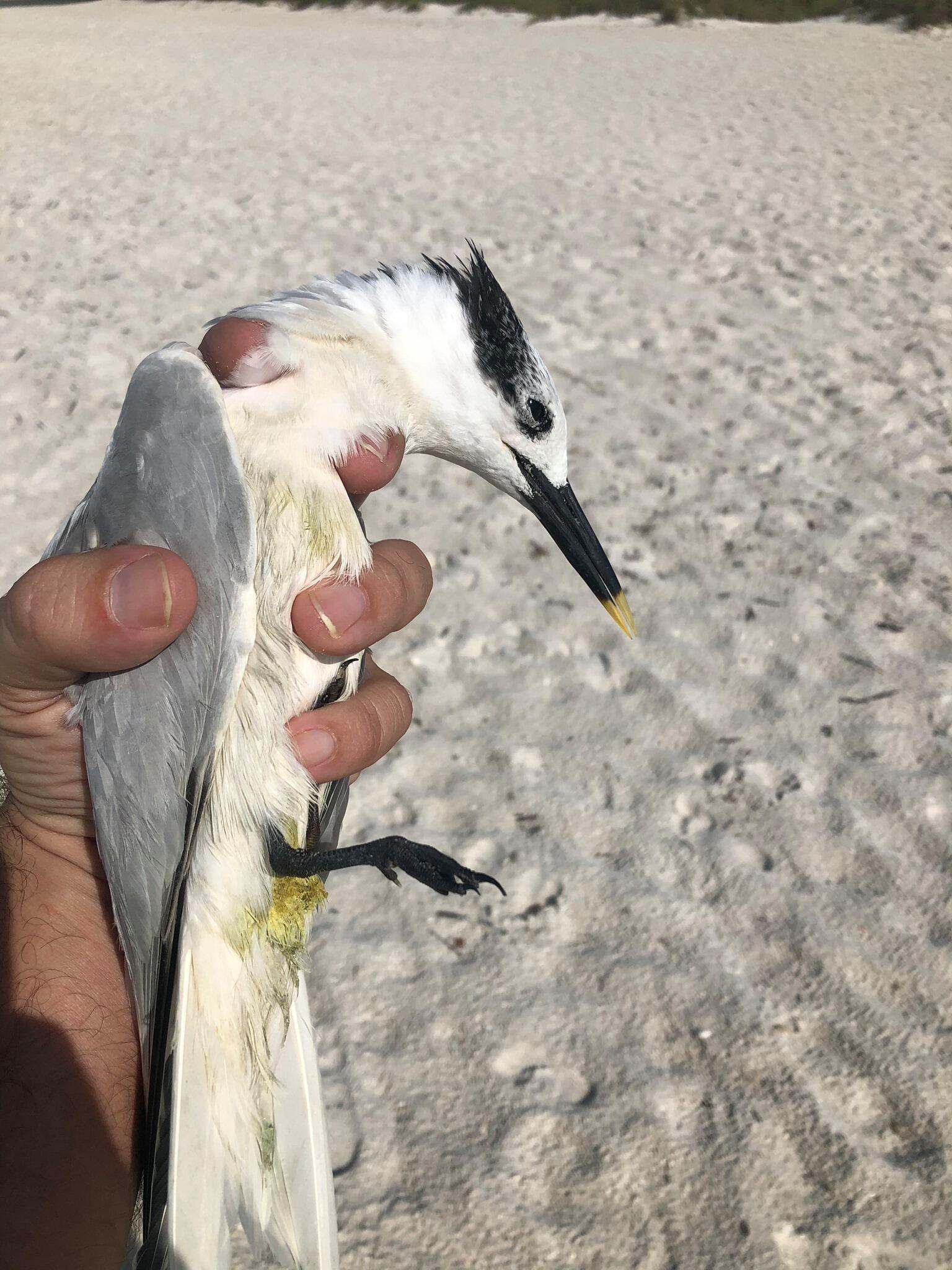Audubon and Partners Discover Culprit Behind Mysterious Seabird Deaths
Published on by Water Network Research, Official research team of The Water Network in Case Studies
Journal publication implicates red-tide poisoning in multi-species mortality event
Audubon biologists Brian Cammarano and Adam DiNuovo banding Black Skimmers in 2020. Photo: Jean Hall
Show your love of birds today. Subscribe to receive email updates about Audubon's conservation work and hear about opportunities to help birds in your area or nationwide.
MARCO ISLAND, FL – Audubon Florida, together with the Conservancy of Southwest Florida, Florida Fish and Wildlife Conservation Commission (FWC), and other professional research partners, have concluded that dead Common and Sandwich Terns found in 2018 died from diseases related to red tide blooms.
Their research, published by the Journal of Comparative Pathology in early March, is entitled “Mortality in Common (Sterna hirundo) and Sandwich (Thalasseus sandvicensis) Terns Associated with Bisgaard Taxon 40 Infection on Marco Island, Florida, USA.”
Audubon biologist Adam DiNuovo was conducting routine monitoring of seabirds in the summer of 2018 on Marco Island when he first encountered numerous dead and dying seabirds.
“DiNuovo and Audubon volunteers were instrumental in documenting mortality, transporting sick birds, and working with FWC and other expert pathologists to identify the pathogens responsible for these infections,” said Audubon Florida Director of Bird Conservation Marianne Korosy, Ph.D.

Biologist Adam DiNuovo holds a sick Sandwich Tern.
In the fall of 2018, DiNuovo began observing sick and dying Common Terns and Sandwich Terns and personally delivered several of them to local rehabilitation facilities, including Conservancy of SW Florida von Arx Wildlife Hospital. Research on the remains of twelve birds, conducted by professional pathologists, identified this multi-species mortality event and described the unusual Bisgaard Taxon 40 bacteria. Researchers believe that brevetoxin may weaken seabirds and make them susceptible to deadly bacterial infections.
Red tide is created by blooms of Karenia Brevis, a planktonic alga that occurs naturally in coastal waters. When nutrients from agriculture, septic tanks, and elsewhere flow through Florida’s canals and rivers, they become food for these algae when they reach the Gulf of Mexico.
In recent years, red tide has occurred more often and has persisted for much longer durations than was historically recorded. Water temperatures warmed by climate change exacerbate the conditions that fuel the algal blooms.
“As Floridians, we all play a role in this issue,” said Korosy. “This research will continue until we identify and treat the causes – which may be from multiple sources,” she added.
Audubon protects birds and the places they. need, today and in the future.
Taxonomy
- Pollution